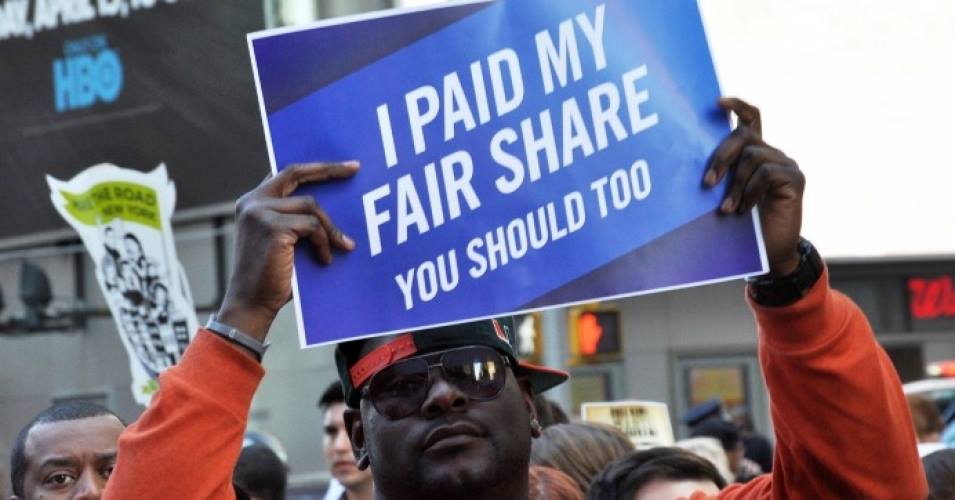[vc_row][vc_column width=”1/6″][/vc_column][vc_column width=”2/3″][vc_column_text]
FOR IMMEDIATE RELEASE: July 30, 2021
CONTACT: Madeline Stocker
(860) 808-7857
madeline.stocker@yeswecancolumbus.org
Statement: New affordable housing plan will hurt Columbus residents
Columbus, OH - City Council has again voted to put wealthy special interests before the needs of our neighborhoods. The City’s new tax incentive plan pits our basic need for shelter against our right to a quality education for our children.
This proposal is a blueprint for rapid gentrification. Its purpose is to displace thousands of our most vulnerable residents to make way for “workforce housing” for new job-seekers coming to our growing city. The City’s term, “workforce housing,” is misleading, because the workforce they mean is mostly young, professional, white-collar workers, and not the many people living in Columbus right now who work for hourly wages. The reality is that the “affordable housing” created by this plan is intended for people who make more money than 40% of current city residents.
Some of the City’s statistics are misleading, as well. The figures they’re using to calculate affordability are taken from the entire metro area; an area comprised of ten counties, including some of the wealthiest towns and cities in the state of Ohio. This amount is much greater than the average median income in the city alone. In fact, the metro area median income is $73,000, and the City of Columbus median income is $47,000 - a difference of $26,000 a year.
This divide is much greater in some of the neighborhoods where this tax incentive is designed to trigger rapid investment, with some areas averaging incomes of $40,000 less per year than the City’s lowest bar for eligibility. Because rent for “affordable” units will be 30% of household income, landlords are likely to seek out tenants whose income is as close as possible to the income caps, so they can collect the highest possible rent while retaining the tax benefits offered by the program. That means this affordable housing solution will actually make landlords less likely to rent to families who are buckling under the strain of rising housing costs.
Worst of all, in many of the neighborhoods with the new incentive designation, most people are already spending more than half of their wages on rent, so when rents go up, they will have to leave. With an existing 54,000 unit deficiency of actual affordable housing in Columbus, is a city-wide shortage of available Section 8 housing, and a waiting list for vouchers that few landlords will accept, the families who can will move out of the city…and many of those who can’t will be out on the street.
Meanwhile, we continue to have one of the highest eviction rates in America, with 18,000 evictions last year alone. The City keeps telling us they’re working on a solution to the eviction problem, but there are at least 24 paid lobbyists in the City of Columbus who represent clients with an interest in keeping evictions fast and easy - that’s more than a third of the registered lobbyists in the city. This spring, the City invited a panel of experts from the Rose Center for Public Leadership in Land Use to share advice on developing mixed income housing and solving the growing income gap. Their chief finding was that our eviction policy needs to be changed. According to one of the panelists, “Your eviction policy is absolutely ridiculous. You have to get that off of the books immediately.” Instead, the City has held six afternoon workshops for groups of twenty-five residents at a time to provide information about the eviction process. For the thousands of working-class people filtering through eviction court, this is not a solution - it’s an insult.
Of course, development is important and necessary to the health of our city, but by stimulating growth and investment without giving current residents the support they need to take advantage of our city’s economic success, our representatives are allowing our richest residents to profit from the suffering of its poorest and most at-risk. The theory is “a rising tide lifts all boats”, but this is not the case. If this approach were working, income inequality would be decreasing. Instead, it’s increasing. Our City’s “trickle-down” approach to economics is hurting particularly vulnerable groups the most: people of color, single mothers, the disabled, and the elderly. Now, the City appears to be coping with increasing income inequality and segregation by simply pricing the poor out of their own homes. Where will they go?
This is an affordable housing crisis. We need policies that will support all working families, including the people at the bottom. We need to promote economic mobility, and combat the effects of decades of institutional discrimination and neglect. We need to invest in preparing the people who already live in Columbus to take advantage of new job opportunities, instead of replacing them with skilled workers from other cities. We need to prevent real estate developers and corporations from buying the loyalty of our elected officials. We need safe, stable housing that’s affordable for all of us. We need rich developers to pay their fair share to support our public schools, and provide living-wage jobs for working families in all neighborhoods.
###
Yes We Can stands for getting big money out of City Hall, building stronger schools, and putting working families’ interests ahead of wealthy developers and corporate donors. We love our city and we want all of us to have a say in the decisions that impact our lives. We want a Columbus where we can all have good jobs with benefits, affordable housing, and feel safe from crime and discrimination.
[/vc_column_text][/vc_column][vc_column width=”1/6″][/vc_column][/vc_row]
